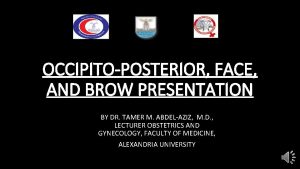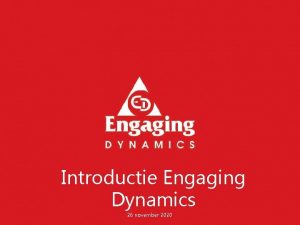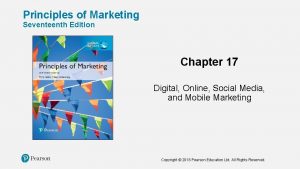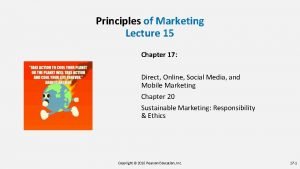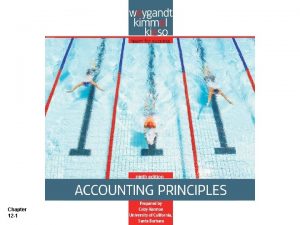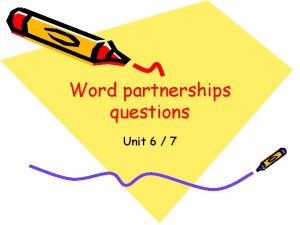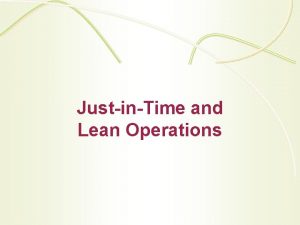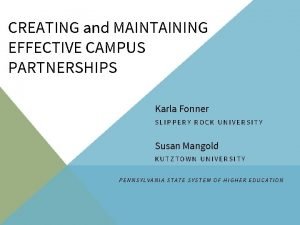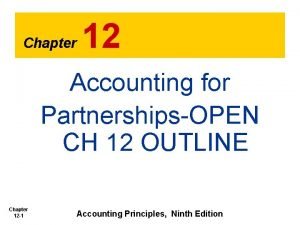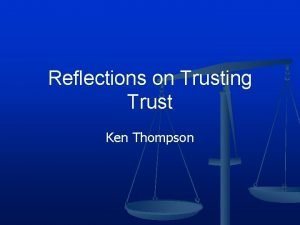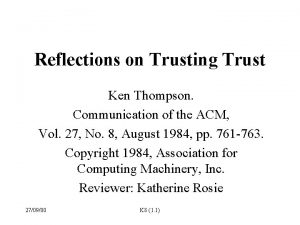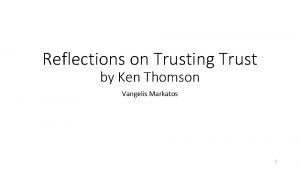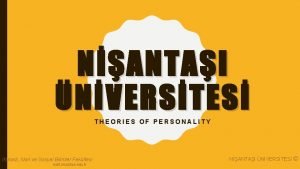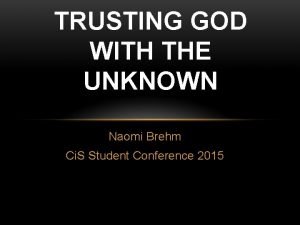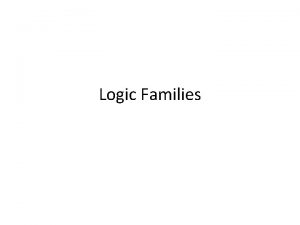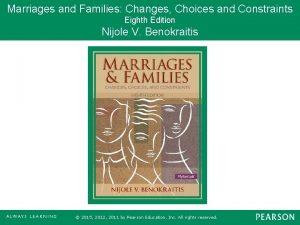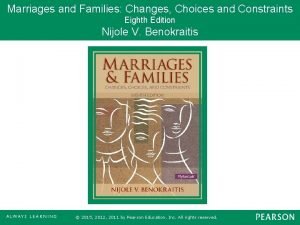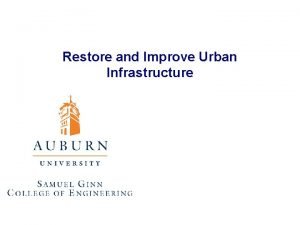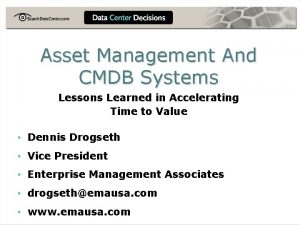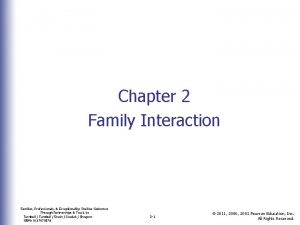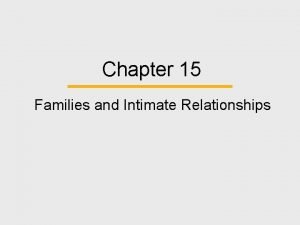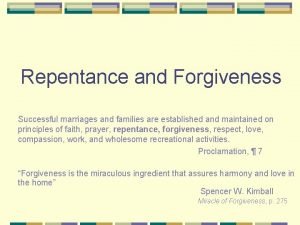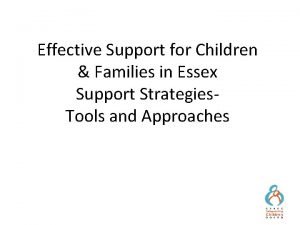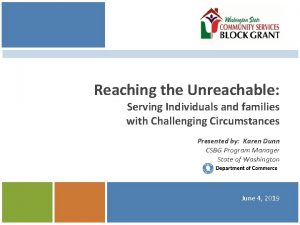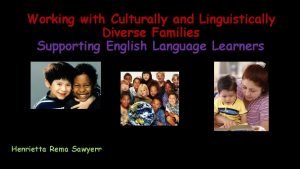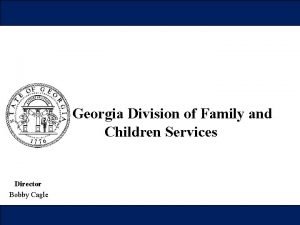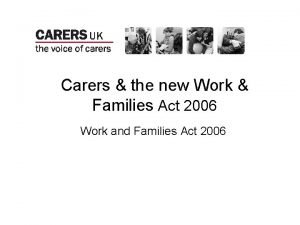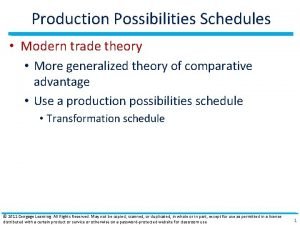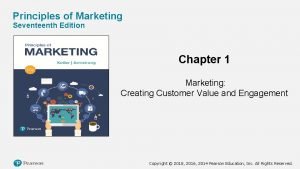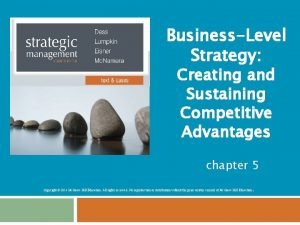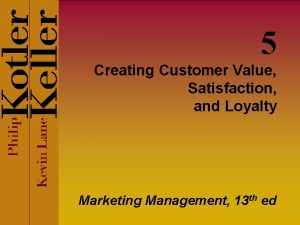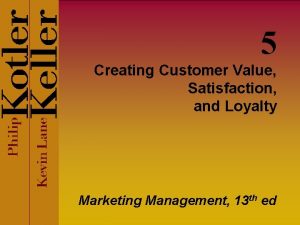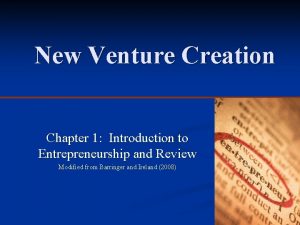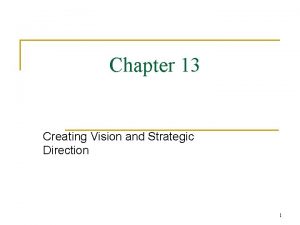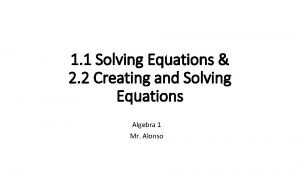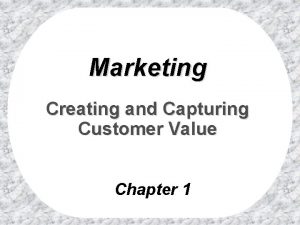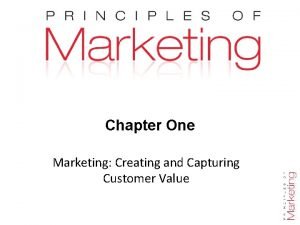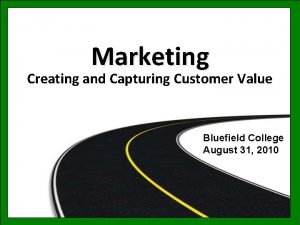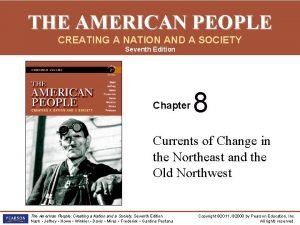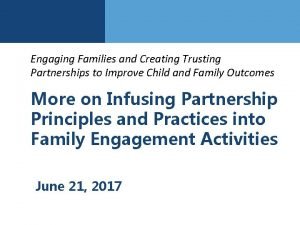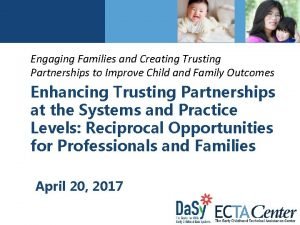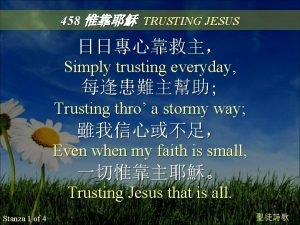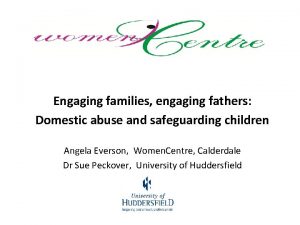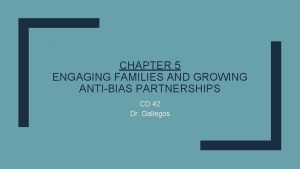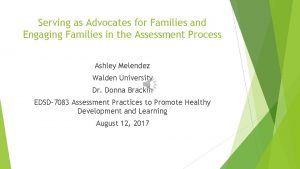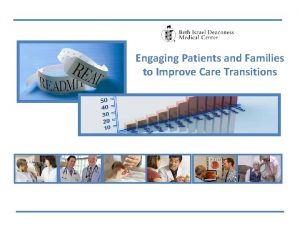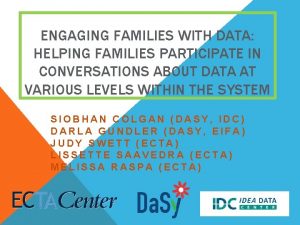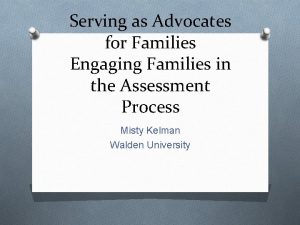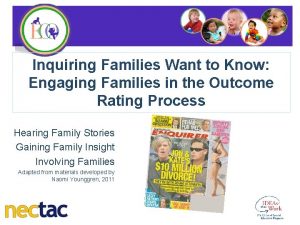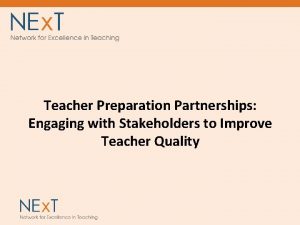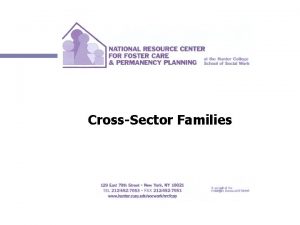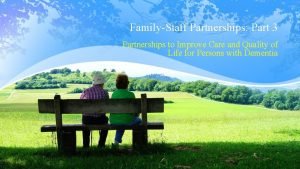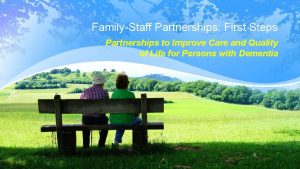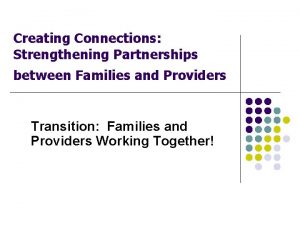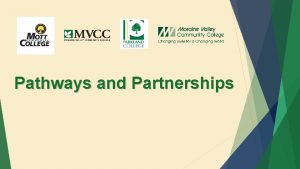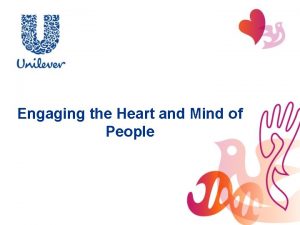Engaging Families and Creating Trusting Partnerships to Improve


































































- Slides: 66

Engaging Families and Creating Trusting Partnerships to Improve Child and Family Outcomes Getting to the Bottom Line of Family Engagement March 29, 2017

Today’s Presenters/Facilitators Christina Kasprzak Early Childhood Technical Assistance Center/Center for IDEA Early Childhood Data Systems Ann Turnbull University of Kansas/ University of North Carolina 2 Carmen Sanchez U. S. Office of Special Education Programs Josh Sparrow National Center on Parent, Family, and Community Engagement Rud Turnbull University of Kansas/ University of North Carolina

Today’s Discussion • Family Engagement and Outcomes for Children and Families • Synthesis of Policies, Frameworks, and DEC Recommended Practices on Family Engagement • Introduction to the How and What of Family Engagement in the Context of Early Intervention (EI)/ Early Childhood Special Education (ECSE) • Systems Supports for Quality Family Engagement Practices 3

Policy Statement Purpose Align the Frameworks with principles of effective family engagement 4

Policy Statement Purpose • Build a common language • Prioritize family engagement as an early childhood and educational strategy. • Provide guidance to the field for implementing highimpact family engagement practices. …have some thing valuable to c ontribute. 5

Definition of Family Engagement Family engagement refers to the systematic inclusion of families in activities and programs that promote children’s development, learning, and wellness, including in the planning, development, and evaluation of such activities, programs, and systems. 6

Carmen. Sanchez@ed. gov 202 -245 -6595 www. ed. gov/early-learning http: //www 2. ed. gov/about/inits/ed/earlylearning/families. html #family-engagement-policy-statement

Family Engagement and Outcomes for Children and Families Josh Sparrow 8

Parent, Family, and Community Engagement (PFCE) Framework Positive & Goal-Oriented Relationships Family Well-being Program Environment Program Leadership Positive Parent-Child Relationships Family Partnerships Continuous Program Improvement Families as Lifelong Educators Children are ready for school and sustain Development and learning gains through third grade Families as Learners Teaching and Learning Professional Development Community Partnerships Family Engagement in Transitions Family Connections to Peers and Community Families as Advocates and Leaders Program Foundations 9 Program Impact Areas Family Outcomes Child Outcomes

What is family engagement? • An interactive process: EC providers and other EC professionals, family members, and their children build positive and goal-oriented relationships. • A shared responsibility of families and professionals: mutual respect for the roles and strengths each has to offer. • At the program level: parents and providers work together toward the goals that families choose for themselves and their children. • At state-systems levels: EC leaders partner with parent leaders and programs to promote family well-being, positive parent-child relationships, and ongoing learning and development for providers and families. • EC professionals, parents and community partners work together to ensure equity, inclusiveness, and cultural and linguistic responsiveness.

Family Outcomes in PFCE Framework • • Family Well-being Positive Parent-Child Relationships Families as Lifelong Educators Families as Learners Family Engagement in Transitions Family Connections to Peers and Community Families as Advocates and Leaders PFCE Family Outcomes Research to Practice Series: https: //eclkc. ohs. acf. hhs. gov/hslc/tta-system/family/rtp-series. html

Family Well-being Families are safe, healthy, have opportunities for educational advancement and economic mobility, and have access to physical and mental health services, housing and food assistance, and other family support services.

Positive Parent-Child Relationships Beginning with transitions to parenthood, parents and families develop warm relationships that nurture their child’s health, development, and learning.

Families as Lifelong Educators Parents and families observe, guide, promote, and participate in the everyday learning of their children at home, at school, and in their communities.

Families as Learners Parents and families learn about their child’s personality, development, and learning style. They also advance their own learning interests through education, training, and other experiences that support their parenting, careers, and life goals.

Family Engagement in Transitions Parents and families encourage and advocate for their child’s learning and development as they transition to new learning environments within and between EC services, early elementary grades, and beyond.

Parent Connections to Peers and Community Parents and families form connections with peers, mentors, and other community members in formal or informal social networks. These social networks are supportive and educational, honor and are inclusive of families’ home language and culture, and enhance families’ social well- being and community life.

Families as Advocates and Leaders Parents and families advocate for their children and play leadership roles in EC programs and systems. They participate in decision-making, policy development, and community and state organizing activities to improve children’s health, development, and learning experiences.

Takeaways • Family engagement promotes family and child outcomes. • PFCE family outcomes are for all families. • The two key ingredients of PFCE are: – Positive, goal-oriented relationships; and – Equity, diversity, and cultural and linguistic responsiveness. • The PFCE Framework is an organizational roadmap for implementing systemic, integrated and comprehensive PFCE engagement throughout programs. 19

Synthesis of Policies, Frameworks, and the DEC Recommended Practices Ann & Rud Turnbull 20

Facilitator prompt: Increasing priority is being placed on family engagement within the early childhood field. As a disability policy leader, Rud, what is the ethical foundation of this policy initiative? 21

Ethical Principles • U. S. Constitution • Core Concepts of Disability Policy • Core Concepts of Disability-Related Supreme Court Decisions 22

Key Ethical Principles Family as Foundation • Family as core unit of society • Family as principal shaper & provider of physical, emotional, fiscal, & other support for children • Family as source of life-long support Dignity • Dignity as an ascribed status, as a ‘regarded as’ standing within a community • Dignity as a state of being worthy, honored, & esteemed, not for what one can do (or cannot do) but simply as a person with inherent worth Community • Community as more than a place or space • Membership & belonging to a greater societal whole • Having support in community programs 23

Facilitator prompt: Are these ethical principles reflected in the Code of Ethics of key professional organizations in the fields of early intervention and early childhood special education? 24

Handout—Ethical Principles: Matrix of Professional Organizations 25

Facilitator prompt: In addition to an ethical foundation, the Individuals with Disabilities Education Act (IDEA) provides a policy foundation for family engagement. What are the relevant provisions of IDEA to which we must be attuned? 26

IDEA’s Requirements Pertaining to Family Participation/Involvement* • • • 27 Purposes Unit of focus Individualized plans Costs of services Procedural safeguards Family violence Principle: Family as Foundation • Services • Service coordination services • Transition planning conferences • Data collection and use *See handout: Relationship of Family as Foundation with IDEA Part C and Part B Requirements

Facilitator prompt: What is the big picture behind IDEA’s requirements in terms of ultimate goals for individuals with disabilities over the full lifespan—long after early childhood services? 28

IDEA’s Preamble “Disability is a natural consequence of the human experience and in no way diminishes the right of individuals to participate in and contribute to society. ” 29 Principle: Dignity

IDEA’s Long-Term Goals Principles: Community Dignity • “Improving educational results for children with disabilities is an essential element of our national policy of ensuring: o Equality of opportunity o Full participation o Independent living o Economic self-sufficiency. ” 30

Facilitator prompt: With this foundation of ethical principles and IDEA goals and requirements, Ann, can you help us capture the essence of the joint Health and Human Services and Department of Education federal policy statement on family engagement? 31

HHS/ED Policy Statement on Family Engagement • “For family engagement to be integrated throughout early childhood systems and programs, providers and schools must engage families as essential partners when providing services that promote children’s learning and development, nurture positive relationships between families and staff, and support families” (p. 1). • “It is the goal of the Departments that all early childhood systems recognize and support families as essential partners in providing services that improve children’s development, learning, and wellness” (p. 2). 32

Facilitator prompt: How do the Council for Exceptional Children’s Division for Early Childhood (DEC) Recommended Practices align with the HHS/ED federal policy statement? 33

DEC Recommended Practices: Family Practices F 1: “Practitioners build trusting and respectful partnerships with the family through interactions that are sensitive and responsive to cultural, linguistic, and socioeconomic diversity. ” 34

DEC Recommended Practices: Family Practices (cont. ) “Family practices refer to ongoing activities that (1) promote the active participation of families in decisionmaking related to their child (e. g. , assessment, planning, intervention); (2) lead to the development of a service plan (e. g. , a set of goals for the family and child and the services and supports to achieve those goals); or (3) support families in achieving the goals they hold for their child and the other family members. ” 35

Facilitator prompt: Moving along from the DEC Recommended Practices, Ann, how do we get to the bottom line of the multiple family engagement frameworks that permeate the early childhood field? 36

Family Engagement Frameworks • Dept. of Education’s Dual Capacity-Building Framework for Family-School Partnerships • Head Start’s Parent, Family and Community Engagement Framework • Center for the Study of Social Policy’s (CSSP) Strengthening Families Approach and Protective Factors Framework • Epstein’s Framework on Parent Involvement 37

Dept. of Ed. ’s Dual Capacity-Building Framework for Family-School Partnerships “. . . Research shows that initiatives that take on a partnership orientation—in which student achievement and school improvement are seen as a shared responsibility, relationships of trust and respect are established between home and school, and families and school staff see each other as equal partners—create the conditions for family engagement to flourish. ” (p. 5) 38

Head Start’s Parent, Family and Community Engagement Framework “Parent and family engagement in Head Start/Early Head Start (HS/EHS) is about building relationships with families that support family well-being, strong relationships between parents and their children, and ongoing learning and development for both parents and children. The Parent, Family, and Community Engagement (PFCE) Framework is a road map for progress in achieving the kinds of outcomes that lead to positive and enduring change for children and families” (p. 1). 39

CSSP’s Strengthening Families Approach and Protective Factors Framework • “Services should be coordinated, respectful, caring, strengths-based, and trauma-informed. ” (p. 47) • In explicating principles of strengths-based practice with parents, the first is: “It is essential to forge a trusting relationship between parents and service providers” (p. 47). 40

Epstein’s Framework on Parent Involvement “. . . productive connections of schools, families, and communities, and pertinent individual interactions of teachers, parents, and students are conducted in order to help students increase their academic skills, selfesteem, positive attitudes toward learning, independence, and other achievements, talents, accomplishments and other desired behaviors that are characteristic of successful students” (p. 42). 41

Facilitator prompt: It is fascinating to note that these frameworks came from such different sources yet have such alignment on partnerships. What further detail is provided on the essence of trusting partnerships? 42

Bringing it All Together: Permeating Theme The bottom line of family engagement is the development of a respectful and trusting partnership characterized by: • Cultural, linguistic, and socio-economic responsiveness • Strengths-based orientation • Individualization and flexibility • Alignment with family preferences/goals/aspirations • Alignment to child goals/outcomes • Equality of family and practitioner roles 43

Facilitator prompt: We can turn to research to guide us in operationalizing partnerships. Ann, highlight for us your own research about the nature of trusting partnerships? 44

The HOW of Family Engagement: Trusting Partnerships Communication Respect Professional competence Commitment Equality Advocacy Source: Turnbull, A. P. , Turnbull, H. R. , Erwin, E. , & Soodak, L. , & Shogren, K. (2015). Families, professionals, and exceptionality: Positive outcomes through partnerships and trust (7 th ed. ). Boston, MA: Merrill/Prentice Hall. 45

The WHAT of Family Engagement: Types of Activities • Meeting families’ basic needs • Referring and evaluating for services and supports • Individualizing in developing and providing services and supports • Extending child’s learning in home and community • Participating and volunteering with program/school • Advocating for systems improvement 46

47

Sharilyn’s Story: Part 1 48

Facilitator prompt: I like “seeing” the HOW of trusting partnerships, especially the potential power of partnerships. Now, please share with us a synthesis of the EI/ECSE-related partnership activities that are recommended in the various frameworks. 49

Meeting Families’ Basic Needs • Providing emotional support • Providing informational support, especially on parenting and child development • Promoting resilience • Promoting social connections • Addressing child care • Addressing health 50

Meeting Families’ Basic Needs (cont. ) • Addressing safety (including child abuse and neglect) • Addressing financial subsistence • Addressing education and career planning for parents • Providing concrete support in times of need • Forging community partnerships to address needs 51

Referring and Evaluating for Services and Supports • Advocating for child, family, and teacher rights • Referring families to the state’s Parent Training and Information (PTI) Center • Coaching families in knowing and acting on child, family, and teacher rights • Implementing Child Find • Initiating and reviewing child referral • Collecting evaluation information on child • Documenting families’ resources, concerns, and priorities • Discussing evaluation results 52

Individualizing in Developing and Providing Services and Supports • Advocating for child, family, and teacher rights • Referring families to the state’s Parent Training and Information Center • Coaching families in knowing and acting on child, family, and teacher rights • Addressing the promotion of child competence across domains • Considering the effective incorporation of assistive technology 53

Individualizing in Developing and Providing Services and Supports (cont. ) • Preparing for the Individualized Family Service Plan (IFSP)/Individualized Education Program (IEP) process • Conducting IFSP/IEP meeting • Finalizing IFSP/IEP document • Implementing IFSP/IEP • Planning for transitions 54

Extending Child’s Learning in Home and Community • Guiding families to teach child through everyday activities and routines • Making home visits • Advocating for preferred informational, emotional, and logistical support • Addressing behavioral challenges in home and community settings 55

Extending Child’s Learning in Home and Community (cont. ) • Helping to connect children and families to neighborhood and community peers • Supporting children to be included in community recreational activities • Supporting children and families to attend community venues and events • Building community partnerships to address school, student, and family needs. 56

Families Participating and Volunteering with Program/School • Creating family friendly environments within the program • Encouraging families to attend program/community events and meetings related to child development • Guiding families in how to assist with learning as a volunteer • Guiding families in how to contribute to other program tasks • Guiding families to volunteer in community events that have school, student and family benefits 57

Families Advocating for Systems Improvement • Taking advantage of resources from Parent Training and Information Centers • Participating in advocacy and leadership training • Mentoring families and being mentored by families in advocacy activities • Informing families about program and community advocacy events and encouraging them to consider participating 58

Where do we go from here? Today’s Webinar: March 29 th (3 -4 p. m. ET) • Getting to the Bottom Line of Family Engagement Next Webinar: April 20 th (3 -4 p. m. ET) • Enhancing Trusting Partnerships at the Systems and Practice Levels: Reciprocal Opportunities for Professionals and Families

Sharilyn’s Story: Part 2 60

Systems Supports for Quality Family Engagement Practices Christina Kasprzak 61

What does a state need to put into place to support implementation of effective practices? Governance Result Quality Standards Finance Implementation of Effective Practices Building High-Quality Systems Accountability & Quality Improvement Personnel / Workforce Data System 62 Good outcomes for children with disabilities and their families ectacenter. org/sysframe

Why do we need a System Framework? • Provides a common definition of a high quality system including components and elements • Aligns with and supports implementation of EBPs • Provides states with a framework for evaluating and improving their system • Through self-assessment it provides focus for program planning

Online Webinar Resources http: //ectacenter. org/~calls/2017/familyengagement. asp Power. Point Handouts Suggestions for Follow-up Reflection/Discussion Resources and References 64

Register for the Next Webinar! Enhancing Trusting Partnerships at the Systems and Practice Levels: Reciprocal Opportunities for Professionals and Families Thurs. , April 20, 2017 3 -4 p. m. ET Register at: http: //ectacenter. org/webinars. asp 65

The contents of this tool and guidance were developed under grants from the U. S. Department of Education, #H 326 P 120002 and #H 373 Z 120002. However, those contents do not necessarily represent the policy of the U. S. Department of Education, and you should not assume endorsement by the Federal Government. Project Officers: Meredith Miceli, Richelle Davis, and Julia Martin Eile. 66
 Big families vs small families
Big families vs small families Occipito posterior position
Occipito posterior position Dynamisch verbinden
Dynamisch verbinden Marketing involve engaging directly with carefully targeted
Marketing involve engaging directly with carefully targeted Marketing involve engaging directly with carefully targeted
Marketing involve engaging directly with carefully targeted Accounting for partnerships chapter 12 solutions
Accounting for partnerships chapter 12 solutions Accenture international development
Accenture international development Word partnership examples
Word partnership examples Product development partnerships
Product development partnerships Jit scheduling tactics
Jit scheduling tactics Maintaining effective partnerships
Maintaining effective partnerships Public partnerships my account registration
Public partnerships my account registration Epsrc prosperity partnerships
Epsrc prosperity partnerships Chapter 12 accounting for partnerships answers
Chapter 12 accounting for partnerships answers Ken thompson trusting trust
Ken thompson trusting trust Reflections on trusting trust explained
Reflections on trusting trust explained Reflections on trusting trust summary
Reflections on trusting trust summary Organismic trusting
Organismic trusting Trusting god in perilous times
Trusting god in perilous times Trusting god in all circumstances
Trusting god in all circumstances I just keep trusting the lord
I just keep trusting the lord Naomi brehm
Naomi brehm Characteristics of ttl logic family
Characteristics of ttl logic family Compare and contrast the bach and marsalis families
Compare and contrast the bach and marsalis families Compare and contrast the bach and marsalis families
Compare and contrast the bach and marsalis families Family of orientation
Family of orientation Marriages and families changes choices and constraints
Marriages and families changes choices and constraints How to understand graphs and charts
How to understand graphs and charts Restore and improve urban infrastructure
Restore and improve urban infrastructure How to monitor and improve workplace operations
How to monitor and improve workplace operations Accurate cutting facilitates sewing and improve garment
Accurate cutting facilitates sewing and improve garment Asset data to improve cmdbs and it systems
Asset data to improve cmdbs and it systems Protect, promote, and improve the health of all people
Protect, promote, and improve the health of all people Families professionals and exceptionality
Families professionals and exceptionality Intimate relationships, marriages, and families 9th edition
Intimate relationships, marriages, and families 9th edition Ada juke family tree
Ada juke family tree Saki the interlopers summary
Saki the interlopers summary Successful marriages and families
Successful marriages and families Effective support for children and families in essex
Effective support for children and families in essex Families and periods of the periodic table
Families and periods of the periodic table Chapter 9. voices and instrument families
Chapter 9. voices and instrument families Prop 206 arizona pros and cons
Prop 206 arizona pros and cons Serving individuals and families
Serving individuals and families Serving individuals and families
Serving individuals and families The needs of families and suitability for the local
The needs of families and suitability for the local Working with culturally and linguistically diverse families
Working with culturally and linguistically diverse families Georgia department of children and families
Georgia department of children and families Vanier institute of the family definition
Vanier institute of the family definition Families professionals and exceptionality
Families professionals and exceptionality Work and families act 2006
Work and families act 2006 Creating production possibilities schedules and curves
Creating production possibilities schedules and curves Chapter 1 marketing
Chapter 1 marketing Creating and sustaining competitive advantage
Creating and sustaining competitive advantage What is customer value satisfaction and loyalty
What is customer value satisfaction and loyalty What are customer value satisfaction and loyalty
What are customer value satisfaction and loyalty By listening to my inner defender voice, i can be sure that
By listening to my inner defender voice, i can be sure that Creating and starting the venture
Creating and starting the venture Creating vision and strategic direction
Creating vision and strategic direction Mari carlos and amanda collect stamps
Mari carlos and amanda collect stamps Capturing value from customers
Capturing value from customers Creating and capturing customer value
Creating and capturing customer value Creating customer value satisfaction and loyalty
Creating customer value satisfaction and loyalty Excel module 1: creating a worksheet and a chart
Excel module 1: creating a worksheet and a chart An expanded model of the marketing process
An expanded model of the marketing process Creating and interpreting distance time graph
Creating and interpreting distance time graph Interpreting distance time graphs
Interpreting distance time graphs The american people creating a nation and a society
The american people creating a nation and a society

